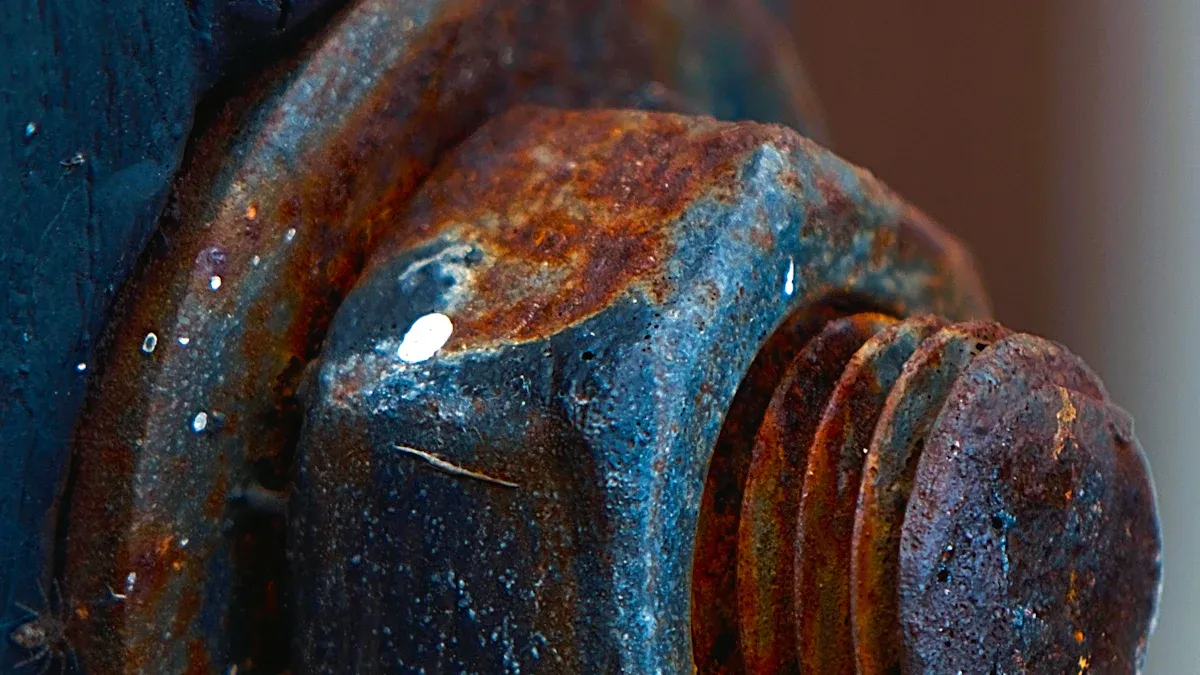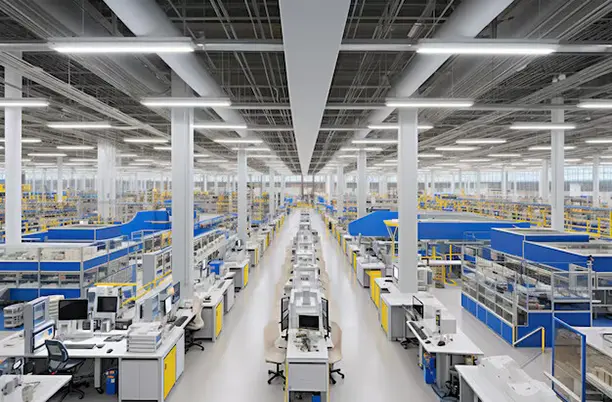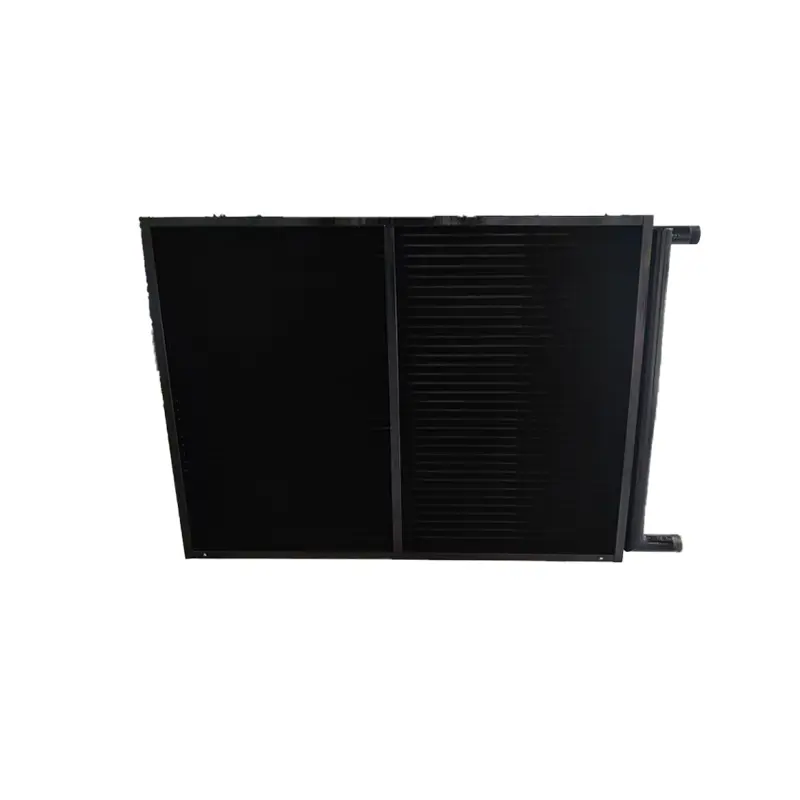Copper-Aluminum Composite Heat Exchanger Manufacturing: Enhancing Corrosion Resistance

Corrosion is one of the biggest challenges in heat exchanger performance. I have seen how copper-aluminum composite heat exchangers efficiently address this issue. By combining copper's superior thermal conductivity of 401 W/m·K with the lightweight and cost-efficient properties of aluminum fins, these systems deliver exceptional durability and efficiency. Industries like HVAC and automotive benefit immensely, as these heat exchangers reduce material costs by up to 30% compared to all-copper designs. Additionally, copper's resistance to thermal fatigue minimizes leakage risks, ensuring long-term reliability. A copper fin heat exchanger, for instance, exemplifies this blend of performance and corrosion resistance.
Key Takeaways
- Copper-aluminum heat exchangers mix copper's heat power with aluminum's lightness. This saves up to 30% on material costs.
- Better corrosion resistance makes them last longer and need less fixing. This also helps avoid work delays.
- Using better ways to make them and adding coatings keeps them strong. These heat exchangers are great for HVAC and car industries.
Overview of Copper-Aluminum Composite Heat Exchangers
What Are Copper-Aluminum Composite Heat Exchangers?
I have always admired how copper-aluminum composite heat exchangers combine the best properties of two materials. These systems use copper for its excellent thermal conductivity and aluminum for its lightweight and cost-effective nature. Together, they create a heat exchanger that is not only efficient but also durable. The copper tubes handle heat transfer effectively, while the aluminum fins enhance surface area for better thermal performance. This combination ensures that industries can achieve high efficiency without compromising on cost or longevity.
Applications in HVAC, Automotive, and Refrigeration
Copper-aluminum composite heat exchangers play a critical role in various industries. In HVAC systems, they ensure optimal cooling and heating performance. Automotive applications benefit from their ability to withstand high temperatures and resist corrosion, making them ideal for radiators and air conditioning units. Refrigeration systems, including refrigerators, freezers, and ice makers, rely on these heat exchangers for consistent and energy-efficient operation. Companies like Ningbo Senjun New Materials Co., Ltd. specialize in producing these components for diverse applications, ensuring reliability across industries.
Role of Copper Fin Heat Exchangers in Performance
The role of copper fin heat exchangers in enhancing system efficiency cannot be overstated. For instance:
- Circular fins on copper coils improve heat transfer by 16–17% and reduce pressure loss by 14–16%.
- Finned helical coil designs achieve a 15–16% higher heat transfer coefficient compared to un-finned alternatives.
- Advanced fin arrangements and the use of nanofluids further boost heat transfer rates, particularly in helical configurations.
These performance metrics highlight why copper fin heat exchangers are a preferred choice for high-efficiency systems.
| Metric | Value |
|---|---|
| Maximum heat transfer | 12.895 kW |
| Effectiveness | 0.377 |
| Minimum entropy generation rate | 0.00118 kW/K |
| Entropy generation number | 1.131 |
| Exergy destruction rate | 0.280 kW |
| Entransy dissipation-based thermal resistance | 4.004 K/kW |
| Entransy dissipation number | 0.457 |
| Recommended fluid and material | Ammonia and Copper with smooth surface |
These specifications demonstrate the technical superiority of copper-aluminum composite heat exchangers in delivering efficient and reliable performance.
Corrosion Resistance Challenges in Heat Exchangers
Common Corrosion Issues in Traditional Heat Exchangers
I have observed that traditional heat exchangers often face significant corrosion challenges. These issues arise due to prolonged exposure to moisture, chemicals, and varying temperatures. For instance, galvanic corrosion occurs when two dissimilar metals, such as copper and steel, come into contact in the presence of an electrolyte. This reaction weakens the materials over time. Pitting corrosion is another common problem, especially in aluminum components. It creates small, localized holes that compromise the structural integrity of the exchanger.
Environmental factors also play a critical role. In coastal areas, salt-laden air accelerates corrosion, while industrial environments expose heat exchangers to harsh chemicals. These conditions reduce the lifespan of traditional systems and increase maintenance costs. I have seen how these challenges can disrupt operations in industries like HVAC and refrigeration, where reliability is crucial.
Tip: Regular maintenance and material selection are key to mitigating corrosion in traditional heat exchangers.
Importance of Corrosion Resistance for Longevity and Efficiency
Corrosion resistance is not just a desirable feature; it is essential for the longevity and efficiency of heat exchangers. When corrosion occurs, it reduces the heat transfer efficiency by creating insulating layers on the metal surface. This inefficiency leads to higher energy consumption and operational costs. I have noticed that systems with poor corrosion resistance often require frequent repairs, which disrupt operations and increase downtime.
By enhancing corrosion resistance, manufacturers can ensure that heat exchangers maintain their performance over time. This improvement not only extends the lifespan of the equipment but also reduces the total cost of ownership. For example, copper-aluminum composite heat exchangers, like those produced by Ningbo Senjun New Materials Co., Ltd., offer superior resistance to corrosion. Their innovative designs and protective coatings ensure reliable performance even in harsh environments.
Investing in corrosion-resistant solutions is a smart choice for industries aiming to optimize efficiency and reduce long-term costs.
Manufacturing Process of Copper-Aluminum Composite Heat Exchangers

Material Bonding Techniques for Copper and Aluminum
I have always found the bonding process between copper and aluminum fascinating. It requires precision and advanced techniques to ensure a seamless connection between the two materials. Manufacturers use methods like mechanical expansion and brazing to achieve this bond. Mechanical expansion involves inserting copper tubes into aluminum fins and expanding them to create a tight fit. This technique ensures excellent thermal conductivity and structural integrity.
Brazing, on the other hand, uses a filler material to join copper and aluminum at high temperatures. This process creates a strong, corrosion-resistant bond that withstands extreme conditions. I have seen how manufacturers optimize brazing by controlling temperature and filler material composition to prevent galvanic corrosion. These bonding techniques are critical for producing durable and efficient heat exchangers, especially in applications like Copper Fin Heat Exchangers, where performance depends on the quality of the bond.
Application of Protective Coatings and Anodizing
Protective coatings and anodizing play a vital role in enhancing the corrosion resistance of copper-aluminum composite heat exchangers. I have observed that manufacturers apply specialized coatings to shield the materials from environmental factors like moisture, salt, and chemicals. These coatings act as a barrier, preventing direct contact between the metal surface and corrosive elements.
Anodizing, a process that increases the thickness of the natural oxide layer on aluminum, further enhances its resistance to corrosion. This technique not only improves durability but also provides a smooth surface that facilitates efficient heat transfer. For Copper Fin Heat Exchangers, manufacturers often combine anodizing with advanced coating technologies to maximize protection and performance.
Note: Protective coatings and anodizing are essential for ensuring the longevity of heat exchangers, especially in harsh environments like coastal areas or industrial settings.
Quality Control Measures for Corrosion Resistance
Quality control is the backbone of manufacturing corrosion-resistant heat exchangers. I have seen how manufacturers implement rigorous testing and monitoring to ensure their products meet industry standards. Cyclic corrosion testing, for example, evaluates the durability of heat exchangers under simulated environmental conditions. This testing involves precise calibration of equipment and adherence to standardized protocols to guarantee reliable results.
Continuous monitoring of parameters like temperature, humidity, salt concentration, and air pressure is equally important. Deviations from prescribed values can compromise the integrity of the tests and the final product. Manufacturers also follow benchmarks like ISO 9000 and Six Sigma to establish robust quality control procedures.
| Quality Control Benchmark | Description |
|---|---|
| ISO 9000 | Establishes, documents, and supports quality control procedures in manufacturing. |
| FDA and CGMP | Ensures adherence to stringent standards in industries like medical devices and pharmaceuticals. |
| Six Sigma | A process improvement strategy that enhances quality control. |
I have noticed that companies like Ningbo Senjun New Materials Co., Ltd. excel in implementing these measures. Their commitment to quality assurance ensures that Copper Fin Heat Exchangers deliver reliable performance and enhanced corrosion resistance.
Tip: Investing in advanced quality control practices not only improves product reliability but also builds trust with customers.
Benefits of Enhanced Corrosion Resistance

Improved Durability and Longevity
I have always believed that durability is the cornerstone of any high-performance heat exchanger. Enhanced corrosion resistance directly contributes to this durability by protecting the materials from environmental and operational wear. Copper-aluminum composite heat exchangers, for instance, excel in resisting common issues like pitting and galvanic corrosion. This resistance ensures that the structural integrity of the exchanger remains intact over extended periods, even in harsh environments like coastal or industrial settings.
The combination of copper and aluminum creates a robust system. Copper's natural resistance to thermal fatigue and aluminum's lightweight properties work together to minimize stress on the exchanger. This synergy results in a product that can withstand years of operation without significant degradation. I have seen how this durability translates to fewer replacements and longer service life, making these heat exchangers a reliable choice for industries like HVAC and refrigeration.
Note: Investing in corrosion-resistant materials is not just about immediate performance; it is about ensuring long-term reliability and peace of mind.
Cost-Effectiveness Through Reduced Maintenance
Enhanced corrosion resistance also brings significant cost savings by reducing maintenance requirements. Traditional heat exchangers often require frequent cleaning and repairs due to fouling and corrosion. However, copper-aluminum composite heat exchangers minimize these issues, leading to lower maintenance costs and extended service intervals.
For example, I have observed that systems with advanced corrosion resistance can reduce fouling by up to 97% and extend service frequency from six months to five years. This improvement not only saves time but also reduces operational disruptions. Over a five-year period, these savings can amount to $1.5 million, making them a cost-effective solution for businesses.
| Metric | Value |
|---|---|
| Reduction in fouling | 97% |
| Reduction in corrosion rate | More than 36x |
| Cost savings over 5 years | $1.5 million |
| Extended service frequency | 10x (from 6 months to 60 months) |
These metrics highlight the financial benefits of investing in corrosion-resistant heat exchangers. Companies like Ningbo Senjun New Materials Co., Ltd. have mastered the art of producing such systems, ensuring that businesses can achieve both performance and cost-efficiency.
Tip: Regular maintenance is essential, but choosing a corrosion-resistant heat exchanger can significantly reduce the frequency and cost of upkeep.
Enhanced Thermal Performance with Copper Fin Heat Exchangers
Thermal performance is another area where enhanced corrosion resistance makes a noticeable impact. Corrosion often creates insulating layers on the metal surface, reducing heat transfer efficiency. By preventing this, copper-aluminum composite heat exchangers maintain optimal thermal performance throughout their lifespan.
Copper fin heat exchangers, in particular, stand out for their ability to enhance heat transfer. I have reviewed studies that demonstrate how innovative fin designs and materials improve thermal efficiency. For instance, optimal fin designs with double-tube heat exchangers (DTHX) can maximize the Nusselt number by up to 10.8%. Exponential fins outperform triangular fins, achieving up to 15% better performance. These advancements ensure that systems operate at peak efficiency, even under demanding conditions.
| Study | Findings | Performance Improvement |
|---|---|---|
| Iqbal et al. | Optimal fin designs with DTHX maximized the Nusselt number | Up to 10.8% |
| Ahmed et al. | Exponential fins perform better than triangular fins | Up to 15% |
| Liu et al. | Innovative fins enhanced PCM thermal performance | Reduced solidification time by 38% |
| Said and Nada | Examined effects of fin geometries on heat transfer | N/A |
| Yassin et al. | Tube rotation advantages over conventional fins | Three times better performance |
These findings underscore the importance of integrating advanced fin designs into heat exchangers. Copper fin heat exchangers leverage these innovations to deliver superior thermal performance, making them an ideal choice for industries that demand efficiency and reliability.
Callout: Enhanced thermal performance not only improves energy efficiency but also reduces operational costs, making it a win-win for businesses.
Innovations and Future Trends
Emerging Technologies in Composite Heat Exchanger Manufacturing
I have observed remarkable advancements in composite heat exchanger manufacturing. Emerging technologies are reshaping the industry by addressing efficiency and sustainability challenges. For instance, Heat Transfer Research Inc. (HTRI) has introduced innovative designs like plate and shell or helical baffle exchangers. These designs enhance heat transfer while reducing pressure loss, solving common operational issues.
Additionally, advanced thermal conductivity technologies are improving heat transfer efficiency across various applications. Nanoparticles, such as graphene and carbon nanotubes, are being integrated into composite materials to boost thermal management. These innovations are particularly beneficial for renewable energy systems, where they enhance the efficiency of solar thermal applications.
Tip: Helical baffle heat exchangers are a game-changer, offering improved thermal effectiveness and reduced fouling.
Advancements in Corrosion-Resistant Materials
Material science continues to drive progress in corrosion resistance. I have seen how researchers are developing biodegradable coatings based on amino acids like alanine, which offer eco-friendly solutions. Nanomaterials are also gaining traction, with encapsulation techniques using nanoparticles showing promise for corrosion prevention.
The table below highlights some key advancements and challenges in corrosion-resistant materials:
| Material Type | Advancements | Challenges |
|---|---|---|
| Polymers | Biodegradable coatings based on amino acids. | Instability at high temperatures. |
| Nanomaterials | Encapsulation techniques using nanoparticles. | Environmental sustainability issues. |
| Alloys | Superalloys with intrinsic anti-corrosion properties. | High cost and complexity. |
| Biomaterials | Biologically derived materials for corrosion prevention. | Availability concerns. |
| Coatings | Economic anti-corrosion coatings. | Limited effectiveness in varying pH environments. |
These advancements are paving the way for more durable and efficient heat exchangers, including Copper Fin Heat Exchangers, which benefit from these cutting-edge materials.
Contributions of Companies Like Senjun to Industry Progress
Companies like Ningbo Senjun New Materials Co., Ltd. are at the forefront of innovation in heat exchanger manufacturing. I have noticed how Senjun leverages advanced technologies to produce high-quality copper-aluminum composite heat exchangers. Their expertise in developing wire tube condensers and Copper Fin Heat Exchangers ensures superior performance and corrosion resistance.
Senjun’s commitment to research and development has led to the creation of products that meet the demands of industries like HVAC, automotive, and refrigeration. By integrating advanced materials and manufacturing techniques, they deliver solutions that are both cost-effective and environmentally sustainable.
Callout: Senjun’s dedication to innovation ensures that their products remain reliable and efficient, even in the most demanding environments.
Copper-aluminum composite heat exchangers provide an exceptional solution to corrosion challenges across industries. Their advanced manufacturing processes enhance durability, efficiency, and cost savings. I have seen how companies like Ningbo Senjun New Materials Co., Ltd. lead the way in innovation, ensuring these technologies continue to evolve and meet industry demands.
Callout: Investing in these cutting-edge heat exchangers ensures long-term reliability and performance.
FAQ
What makes copper-aluminum composite heat exchangers superior to traditional designs?
I have found that these exchangers combine copper's thermal conductivity with aluminum's lightweight properties. This synergy enhances efficiency, durability, and corrosion resistance, outperforming traditional single-material designs.
How does Ningbo Senjun ensure the quality of its heat exchangers?
Senjun employs rigorous quality control measures, including cyclic corrosion testing and ISO 9000 standards. These practices guarantee reliable performance and long-lasting corrosion resistance in their products.
Are copper-aluminum composite heat exchangers environmentally friendly?
Yes, they are. I’ve observed that their lightweight design reduces material usage, while advanced coatings minimize environmental impact, making them a sustainable choice for various industries.
Tip: Choosing eco-friendly heat exchangers supports sustainability goals without compromising performance.


















